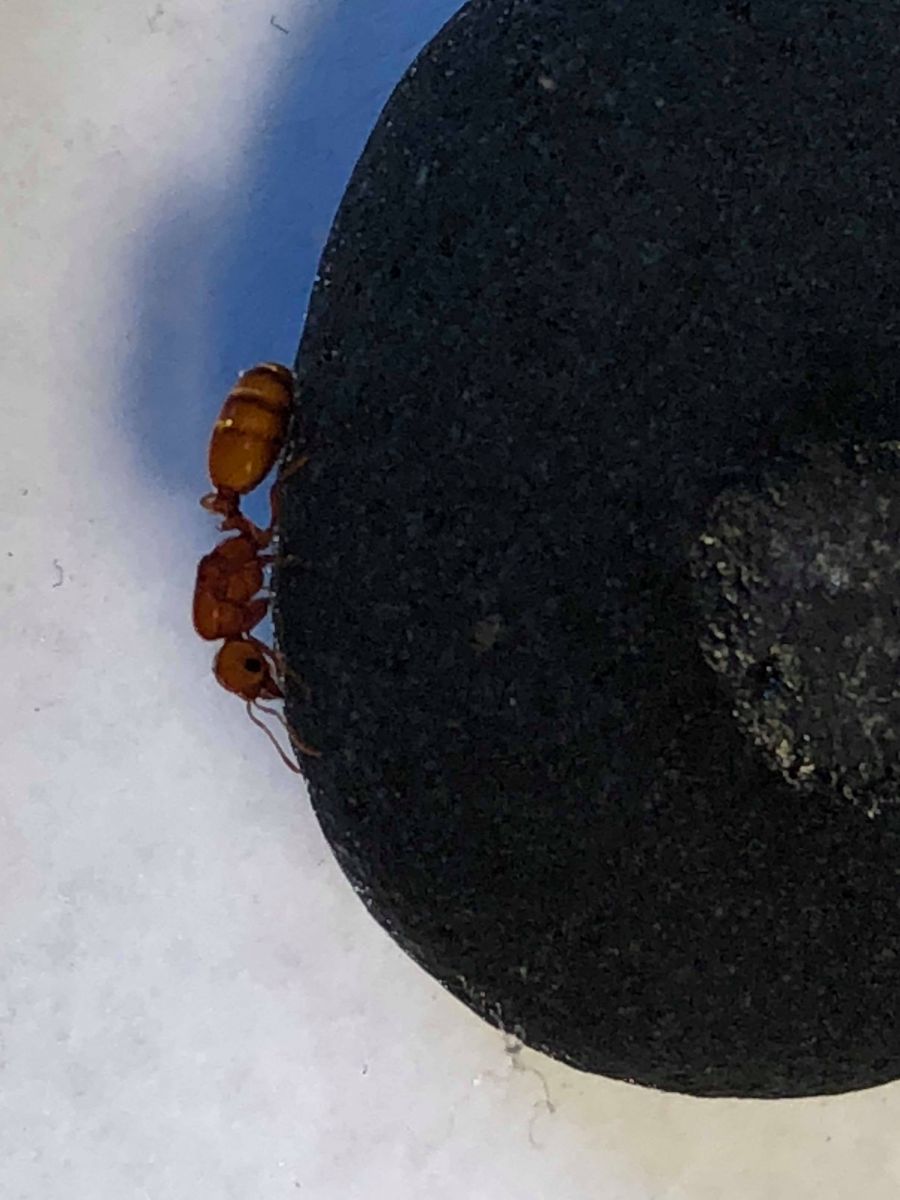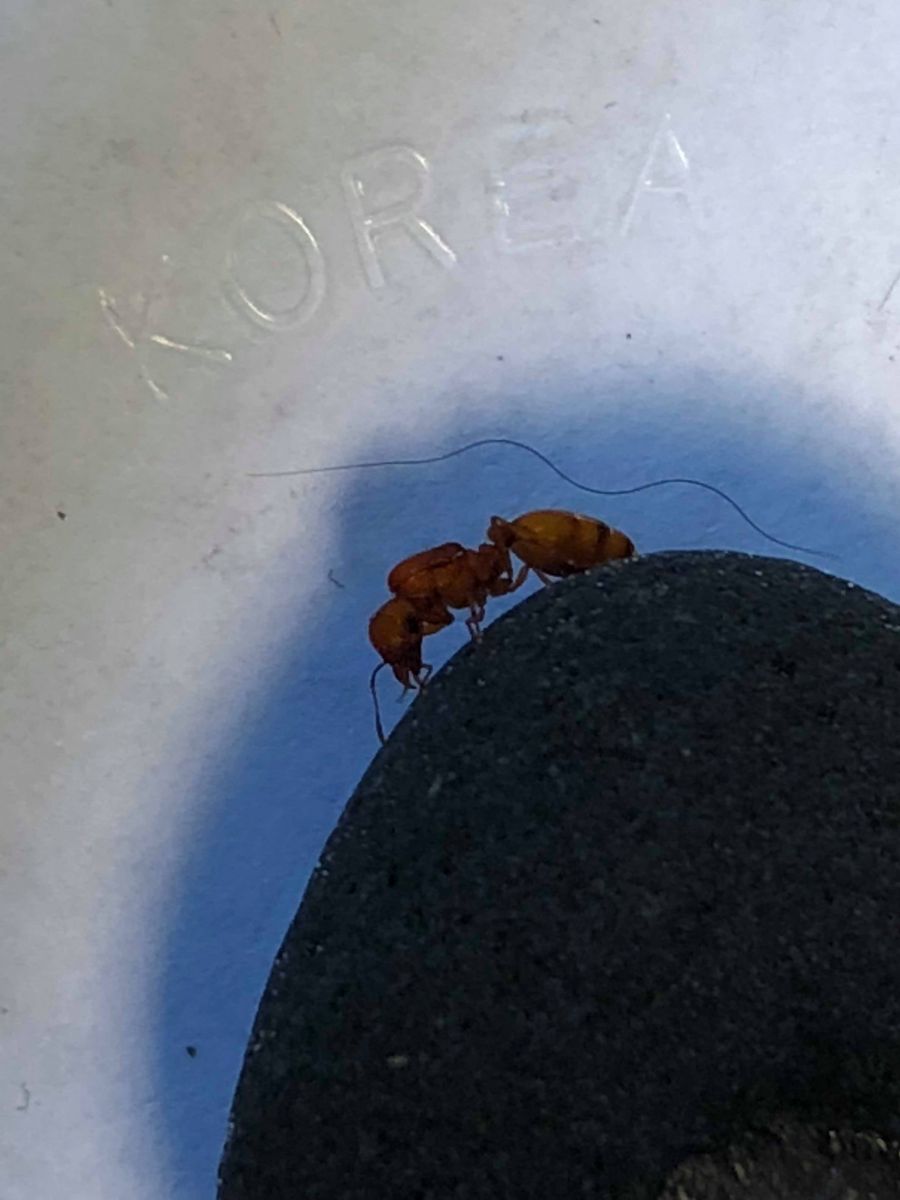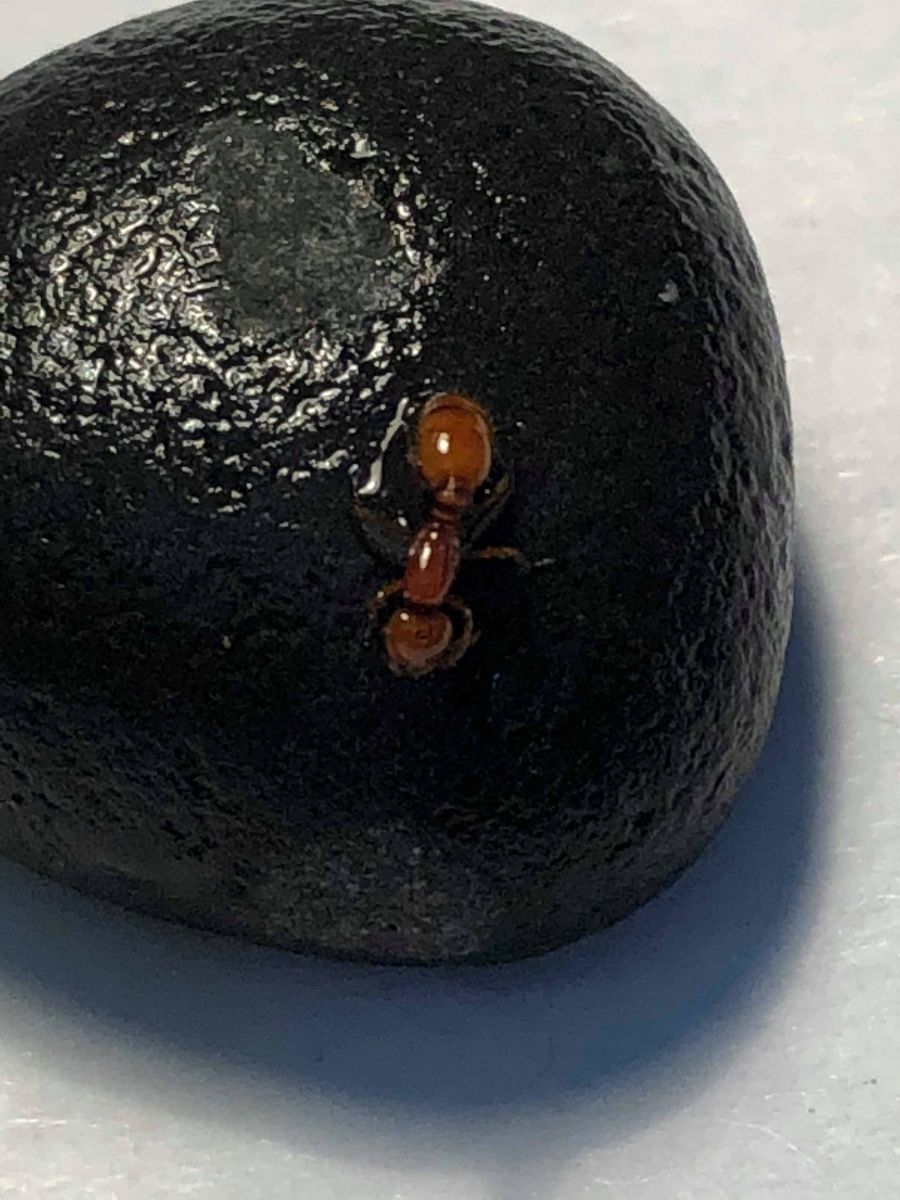1. Collected in a city park in Tucson Arizona.
2. Collected 07/17/2018
3. Urban desert scrub habitat. Collected around a foraging colony of Solenopsis sp. ants, and her color made her stand out.
4. 6mm
5. Red orange head/thorax color with slightly lighter orange gaster, very shiny, brown stripes and small yellow hairs on the gaster.
6. Round heart-shaped head, two petiole nodes.
7. Readily dove and stayed underwater until coaxed out.
8. No nest found.
9. Flew morning 07/17/18




















